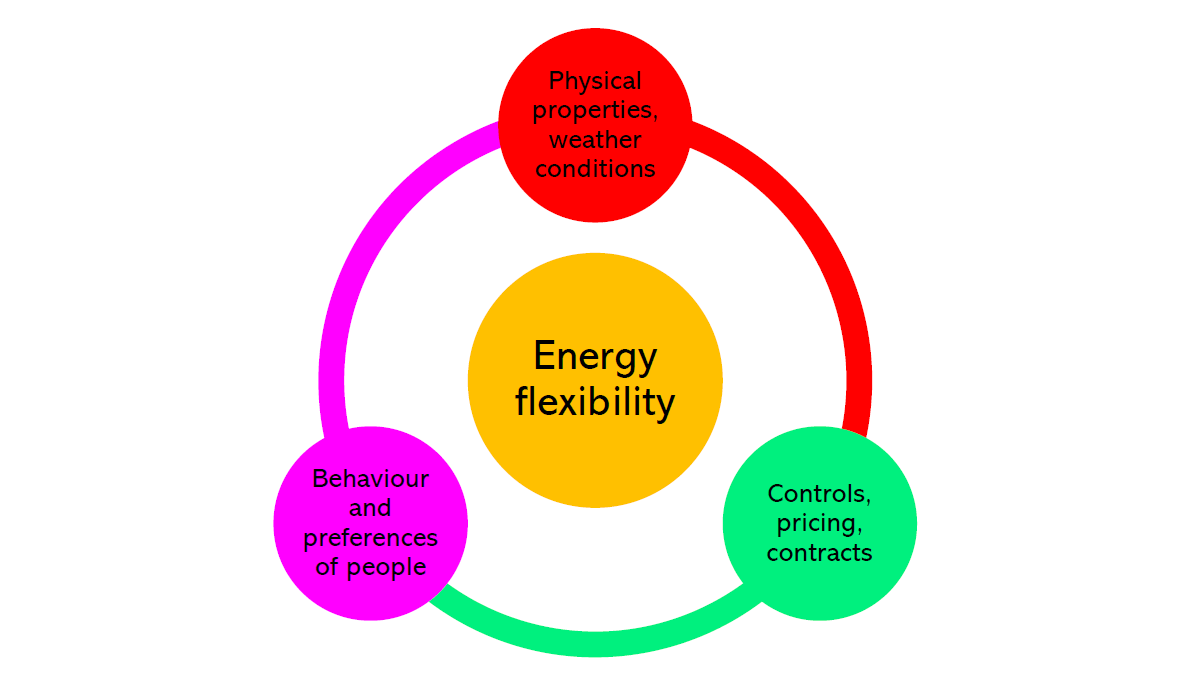Kick-Starting a Literature Review
Quick recap: literature review is a thing PhDs do because they really do not know what to do. And the way the know what to do for the next three, four or whatever years is to find out what others (mainly academics) have done before. And that is what I am trying to get done now.
Since this is the first blog-post about my PhD let’s start with what my PhD is about.
Basics
In my PhD I want to find ways of making buildings, where we consume a LOT of energy by the way, more flexible consumers of energy. I focus on heating, where most energy is used in the Northern hemisphere. It is also convenient because turning the heating off does not make your home cold right away would take some time for it to start cooling down. And if done only for a minute… you would not notice a thing!
The figure below shows the idea. The solid line is demand if the system is run ‘business as usual’ or the reference, but with flexibility (the dashed line) we could start shifting energy demand around.

And so what you ask? Well, remember that we have been building quite a lot of renewable energy during the past years in many countries which actually varies. Also, to reduce carbon emissions heating is becoming increasingly electrified. Flexibility in buildings could be used to cope with this intermittency or variability and is highly valued in electricity markets ($$$).
My Literature Review
I believe the way to go with making buildings flexibile is automation. And I mean automation big time since you need a lot of buildings to reach an impact. I am developing an automation and control strategy which would be easy to implement and scalable, and usable in the market.
In my literature review I will be focussing on the following three key areas:
- Energy portfolio and asset management
- Experiments and trials into advanced Automation and control for flexibility
- Electricity markets and requirements for flexibility.
The reason choosing these specifically is that based on my research into control and automation research in buildings, most research has not assessed scalability and have somewhat omitted practical operation of energy markets. I am looking into 1) because I think scalable control strategies should make buildings something parties in markets can make use of and interpret in their operations. 2) is to learn from what other practical researchers before me have been doing in buildings. 3) is to understand what kind of markets are out there for flexibility and where and how buildings could be used.
Pro Tips in a Nut-Shell
For anyone reviewing research I would say the following things which have helped me so far a lot. Quite simple stuff:
- Talk about your review.
- Go to that library workshop.
- Be critical.
- Start writing, anything.
Time to go now. Will put an update out as soon as I have got something meaningful to say about outcomes of the review!
To practitioners,
Eramismus
I am a practical Finn with interests spanning energy, digitalisation and society. I am currently working towards a PhD in England. Among other things I try to explore the layered nature of sustainability through philosophy and technology.


